The Weekend Post: The Human Brain (Happy Weekend Steemians)
Some updates first:
So, how are all steemians doing? Had a busy, good or lousy week? It does not matter, because it’s the weekend now!!! I realized that there were some hiccups in steemit itself, as the site was down for some time, but the team managed to restore the sites functionality within few hours. Kudos to that. The previous "submit a story" button in the top right corner now has changed to "post", with a blue background, which I think is nice. But I think it should be called "new post". Don't you think? Just a thought. What other new options would you like to see in this site?
Anyhow, today I thought of writing about one of the most precious, yet most complicated organs in the human body. Yes, you guessed it right! It is the "BRAIN". So, sit back, and relax, I hope you enjoy reading this as much as I enjoyed writing it. This will be the beginning of a series of new content, which I will be posting specifically about the human brain, its functionality, new research, as well as my current research findings (more about it later).
The Brain
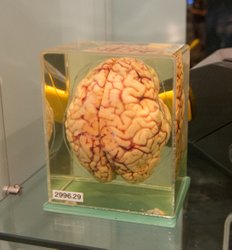
Human brain is a highly complicated structures in the human body, and it is one of the least well known organs in terms of its anatomy and the functionality compared to other organs in the body. It is estimated that there are over a 100 billion neurons in the brain, and collectively it holds our memories, judgments, ethics and moral values, emotions, and most importantly the consciousness.
As much as we love to create myths about the least known, brain it-self does not differ much. There are popular myths such as “we only use 10% of our brain”, or “brain cells (neurons) are immune to self-healing after damage”, “language is located only in our left brain” and so on. However, with the advancement of new technologies such as functional magnetic resonance imaging (fMRI) (left picture below), diffusion tensor imaging (DTI) (right picture below) has allowed us to identify the true functionality and the connectivity of the brain in real time. (I will be posting more about these technologies in the coming weeks, so stay tuned).
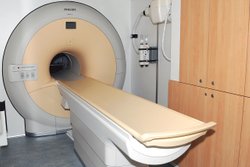 ------|------
------|------ 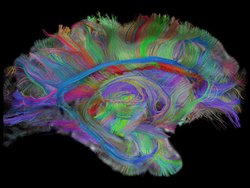
As an introduction, I will start with the basics of the human brain, what we know so far. So the human brain consists of 2 main parts: the right lobe (right hemisphere), and the left lobe (left hemisphere). The right lobe controls the left side of the body, whereas the left lobe controls the right side of the body. So how do we know this? By studying the patients who suffer from paralysis. It was evident that when there’s damage to the left brain, the right side of the body gets affected, and so on. So, both hemispheres are connected via a thick bundle of nerve fibers known as the corpus callosum. So, both sides (right and the left) can talk to each other.
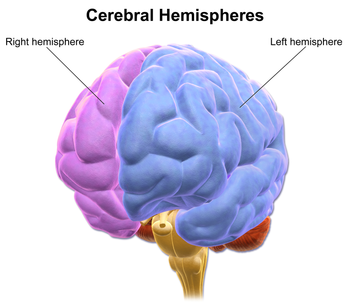
On top of that, our brain (the cerebrum) which is the big one (not the cerebellum which is the smaller one) can be divided into 4 main parts known as lobes.
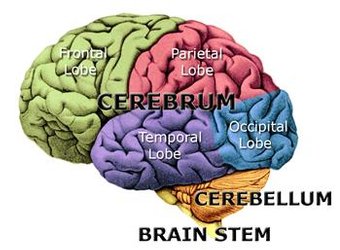
- Frontal lobe – known to support higher thinking skills, decision making (which also shows the maturity)
- Temporal lobe – known to process our hearing
- Parietal lobe – known to coordinate our movements
- Occipital lobe – known to process our vision
So, the functionality wise, of course, all lobes are more complicated than that, but in general those are the most prominent functions which is processed by each main part of the brain.
And yes, we have another smaller brain behind our main brain (known as the cerebellum), which is also known to coordinate our movements. Patients with damaged cerebellum will suffer from imbalance and issues with coordination. More details about it later.
So if you are still reading this post, which means you now know something about our brains. At least some fraction of it. In the coming weeks, I will be posting more interesting stuff, such as the functionality of each part of the brain in more detail, especially the parietal and the occipital lobes, and how each part of the brain is interconnected with each other, and simultaneously activates during tasks. And also, why is it so difficult for us to fully understand how our brains work?
Hope you found this post interesting. Remember to Up vote and follow. :)
Until Next Time....
@reported has voted on behalf of @minnowpond. If you would like to recieve upvotes from minnowpond on all your posts, simply FOLLOW @minnowpond. To be Resteemed to 4k+ followers and upvoted heavier send 0.25SBD to @minnowpond with your posts url as the memo
This was a very interesting piece of writing!
May I give you some advice in case you wish to get more recognition for your scientific posts? I'd suggest you put some references and image credits ;)
Thank you for a thorough post. I am looking forward to your more independent exploration of this topic.